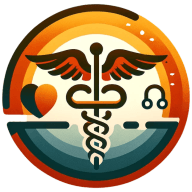How Can You Improve Patient Outcomes in Healthcare?
In the ever-evolving field of medicine, staying ahead of the curve can make a significant difference in patient care. This Q&A session features insights from top professionals, including an Owner and a Doctor, who share their groundbreaking strategies. From personalized, data-driven patient care to team-based models for holistic patient care, this article covers five innovative approaches. Discover the latest techniques to improve patient outcomes and elevate medical practice.
- Personalized, Data-Driven Patient Care
- Integrating Multidisciplinary Care for Optimal Recovery
- Adaptive Radiation Therapy for Precise Targeting
- Predictive Analytics for Proactive Patient Care
- Team-Based Models for Holistic Patient Care
Personalized, Data-Driven Patient Care
To enhance patient outcomes, I've adopted a personalized, data-driven approach that combines advanced diagnostics with meaningful patient education. Tools like continuous glucose monitors and in-depth metabolic assessments allow me to uncover insights often missed in standard evaluations. These insights enable me to craft tailored interventions that address each patient's unique health profile, bridging the gap between general medical guidelines and individual needs.
Equally important is empowering patients with knowledge. By simplifying complex medical concepts, I help patients understand their conditions and take ownership of their health. This focus on education fosters a collaborative patient-provider relationship built on trust and confidence, paving the way for long-term wellness.
Additionally, my practice operates on a direct-care telehealth model, eliminating barriers like long wait times and rushed appointments. This approach allows me to dedicate ample time to each patient, integrating lifestyle medicine-such as plant-based nutrition and preventive strategies-with cutting-edge treatments like GLP-1 agonists for insulin resistance.
My ultimate goal is not just to manage symptoms but to achieve sustainable improvements and, where possible, disease remission. By combining precision diagnostics, education, and personalized care, I aim to empower patients to thrive and take control of their health journeys.
Integrating Multidisciplinary Care for Optimal Recovery
One innovative approach I've taken to improve patient outcomes at The Alignment Studio is integrating multidisciplinary care into a single, cohesive framework. My 30 years of experience treating musculoskeletal and sports injuries taught me that optimal recovery often requires more than just physiotherapy. For example, I worked with a young AFL player recovering from a significant ACL injury. Beyond physiotherapy, his rehabilitation included tailored Pilates sessions to rebuild core strength, remedial massage to address compensatory muscle tension, and nutritional advice to support tissue healing. By coordinating these services under one roof, we not only accelerated his recovery but also enhanced his overall performance when he returned to the field.
This approach draws on my qualifications in physiotherapy and my experience working with elite athletes and dancers, where I saw the profound impact of addressing multiple facets of health simultaneously. The Alignment Studio embodies this philosophy. Our team collaborates daily to ensure each patient receives a customized treatment plan that aligns with their needs and goals. By addressing postural issues, movement patterns, and lifestyle factors together, we empower patients to achieve long-lasting results rather than short-term relief. This model has proven effective for everyone from desk workers to national athletes, setting a new standard for integrated healthcare in our field.

Adaptive Radiation Therapy for Precise Targeting
One innovative approach in radiation therapy to improve patient outcomes I teach is incorporating integrating adaptive radiation therapy (ART) into our treatment plans. ART uses advanced imaging and AI algorithms to adjust treatment delivery in real time, accounting for changes in tumor size, shape, or patient anatomy over the course of treatment.
As an example, a patient with a head and neck tumor experienced significant weight loss during treatment, which altered the tumor's position relative to healthy tissues. Traditional plans might not adapt quickly enough, increasing the risk of radiation hitting critical structures. With ART, we re-mapped the treatment plan mid-course, ensuring precise targeting and minimizing side effects.
My advice? Embrace technologies like ART to individualize care dynamically-it's a powerful way to deliver more effective, patient-centered radiation therapy.

Predictive Analytics for Proactive Patient Care
To improve patient outcomes, I introduced predictive analytics into our practice. This approach uses data from patient records and advanced software to identify individuals at higher risk of complications or hospital readmissions. By analyzing patterns in their health history, we can predict potential issues before they become serious. This allows us to act earlier, adjust treatment plans, and offer more proactive care.
For example, if the system identifies a patient with a higher chance of developing complications after surgery, we can take preventive measures, like closer monitoring or additional treatments.
This early intervention has helped reduce emergency admissions and better manage chronic conditions, leading to improved patient health and fewer hospital visits. Overall, using predictive tools has made our care more efficient and focused, ensuring patients stay healthier and avoid preventable complications.
Team-Based Models for Holistic Patient Care
One innovative approach medical leaders can take to improve patient outcomes is implementing team-based care models that prioritize collaboration across disciplines.
By breaking down silos and fostering communication among physicians, nurses, and allied health professionals, patient care becomes more holistic and efficient.
Incorporating advanced technologies, such as AI-driven diagnostics or wearable health monitors, can also enhance decision-making and early intervention.
Furthermore, embedding continuous feedback loops and patient input into care planning ensures that strategies remain patient-centered and adaptive.
These efforts not only improve outcomes but also strengthen trust and engagement between teams and the patients they serve.



